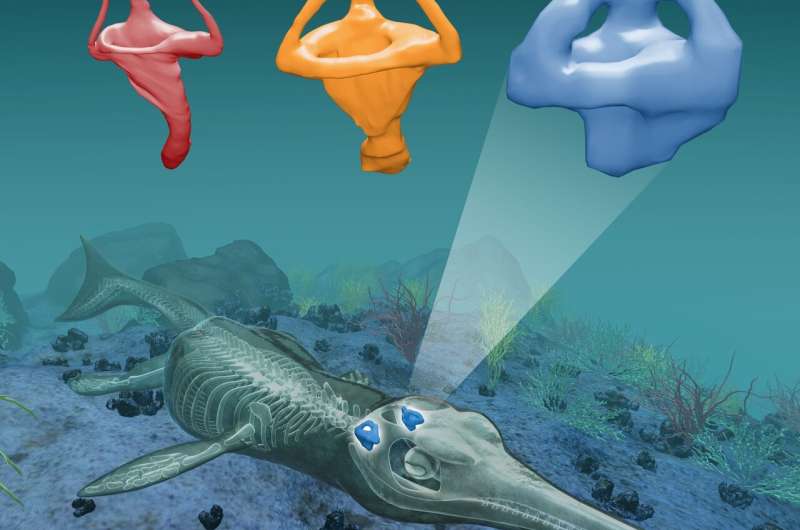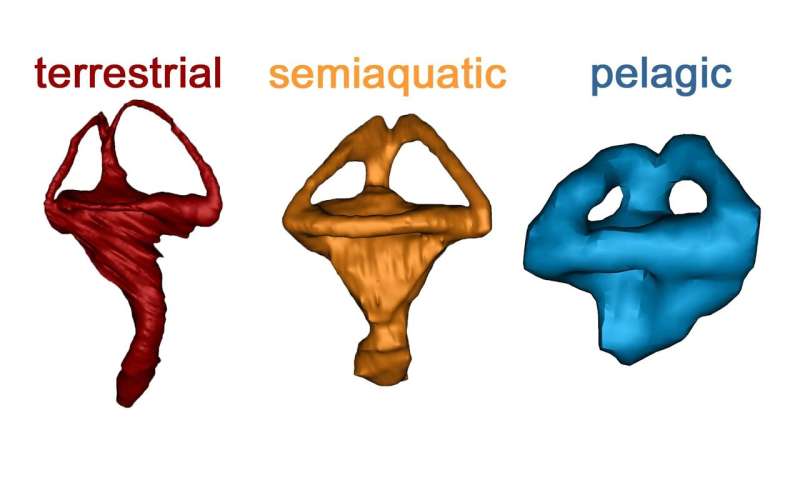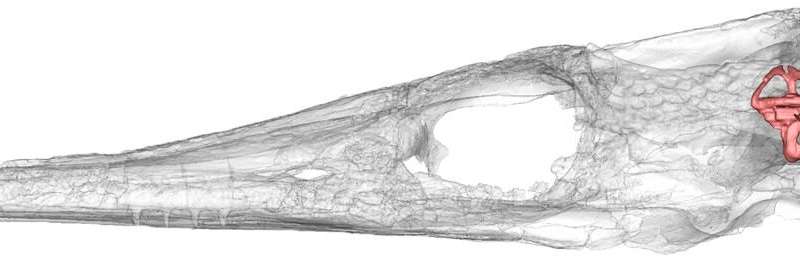April 21, 2020 report
The evolution of the ear canal in an ancient crocodile relative

An international team of researchers has found that an ancient crocodile relative underwent body transitions as it evolved from a land to a sea creature before its ears changed to suit an underwater environment. In their paper published in Proceedings of the National Academy of Sciences, the group describes their in-depth study of thalattosuchia skulls and what they found.
Thalattosuchia was an ancient crocodile species that lived in the world's oceans over 150 million years ago. But before that, they were land-dwelling. Prior research has shown that they took to water in a much slower fashion than other creatures like whales, existing as semi-aquatic creatures for many years before becoming full-fledged sea creatures. Study of their fossilized remains has shown their front legs evolving to become fins, and their back legs evolving into a fluked tail. Their bodies grew slimmer and sleeker to so they could glide smoothly through the water. And once they became sea creatures, their internal organs changed to suit the new environment. One such organ was the inner ear. And it was this organ that was the focus of this new work.
To learn more about the evolution of thalattosuchia's ears, the researchers conducted CAT scans on over a dozen skull fossils. They focused most specifically on the inner ear structures used to maintain balance and equilibrium in land creatures.
The inner ear is made up of three looping semicircle canals. The researchers found that after thalattosuchia became a sea creature, the canals in the inner ear expanded in thickness but became shorter in length. Their final shape was very similar to that of modern whales and dolphins. The researchers note the shape is more suited to creatures that live in the deep ocean where buoyancy is more important than dealing with gravity's effects. The researchers also found that the timeline of the inner ear changes showed that they came about due to ocean conditions rather than serving as a force pushing them into the sea. Thalattosuchia lived during the Jurassic period and went extinct approximately 125 million years ago.
-

Three different inner ears based on the habitat the animal lived in. Credit: Julia Schwab -

Transparent skull showing the position 642 of the endosseous (bony) labyrinth. Credit: Julia Schwab
More information: Julia A. Schwab et al. Inner ear sensory system changes as extinct crocodylomorphs transitioned from land to water, Proceedings of the National Academy of Sciences (2020). DOI: 10.1073/pnas.2002146117
Journal information: Proceedings of the National Academy of Sciences
© 2020 Science X Network





















